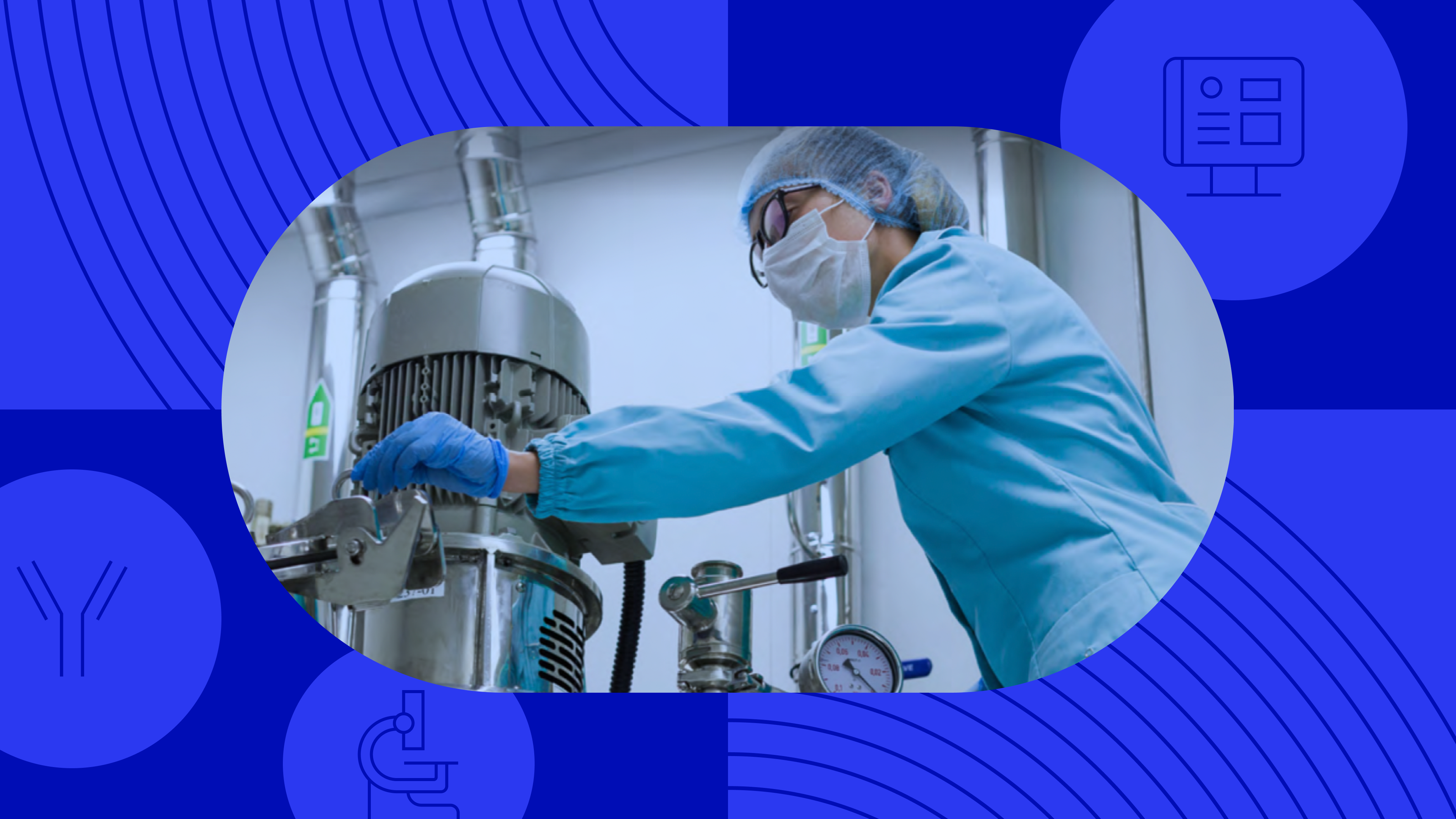Sharing is caring — especially in drug development: Lessons from Benchling’s Development Summit

A palpable spirit of sharing permeated every discussion at the 2025 Benchling Development Summit. Over 40 industry leaders came together at our Boston office to share insights, exchange ideas, and tackle the biggest challenges in biopharma development.
Benchling CEO and cofounder, Sajith Wickramasekara, opened with a look at how modern software and AI agents can accelerate the entire R&D lifecycle. Chief Product Officer Shawna Wolverton and Head of Applications Derek Halliday followed with an overview of the challenges development teams face and showcased Benchling’s latest innovations in process development, analytical sample testing, and AI-driven experiment optimization.
Rounding off the presentations was Roy Helmy, Associate Vice President of Regulated Bioanalytics at Merck Research Laboratories, who discussed advancing vaccine research and development. Throughout the summit, roundtable conversations sparked discussion with attendees sharing learnings and new ideas. Here’s a peek into what top development leaders discussed during the summit.
*Please note: In adherence to Chatham House Rules, no direct attributions have been made.
Modern science runs on a strong data foundation
Both R&D scientists and technologists universally recognized the value of a robust data foundation for discovery, development, and quality functions. Despite development being a structured discipline, most process and analytical data is still captured as unstructured information. As one participant candidly put it, starting out with this kind of data could feel "like we were still living in the '80s or '90s." Great if you’re nostalgic for parachute pants or flannel shirts, but not if you’re keeping pace with modern drug development.
The consensus? Operating on platforms that consolidate multiple functions and use cases is key. A technologist from a top 10 global biopharma company noted, "Having a unified platform is a strategic benefit. It helps ensure cohesion across our data model and reduces the burden of change management and legacy data import."
Ontologies were another hot topic. A seemingly common term like 'cell lot' can have vastly different data expectations depending on whether you're a research scientist, an upstream process engineer, or a QC technician. While most companies are actively working to align on definitions, creating a universal ontology across process, product, and analytical domains is still out of reach for any one organization. This is where pre-competitive alliances, as seen with the Allotrope Foundation, aim to bridge the gap. There's significant optimism for standardization, even if progress will take time.
Rethinking systems for development
In the opening session, Shawna highlighted the challenges development teams face when selecting technology systems. They must balance the flexibility required in early development with the structure demanded in late development and bioanalytical functions.
Historically, ELN and LIMS have been the primary options. But as the conversation made clear, the role of LIMS is evolving. Once focused on basic data capture and batch records, today’s teams expect far more — seamless integrations, real-time insights, and the ability to connect data across functions. Many legacy systems weren’t built for this kind of complexity.
What scientists want now is faster answers to bigger questions. They want to reduce the time it takes to gain key scientific insights and understand the 'so what' of their data. Crucially, they seek guidance on next steps, such as: "Which parameter conditions should I evaluate next?", "Do I need to reanalyze this data at different dilution factors?", or "Which parameter is most impacting a quality attribute I'm optimizing for?"
The vision is clear: systems should not only organize data, but actively guide scientific decisions.
It’s time to get real about AI
The group cut through the hype to provide an honest assessment on AI's potential and limits across development and regulated functions in biopharma. As one digital leader at a top biopharma company stated, "AI isn't just a new technology; it's a reimagination of how we do work. We're going to really have to let go of some historical assumptions and ways of working."
AI use cases are rapidly emerging across the board, from decision-making support and experiment optimization to data analysis, QC checks, and report generation. However, context matters with one participant explaining, "How you use these tools for your own internal decision-making is up to you. It can be a strategic advantage, depending on your own risk tolerance and awareness of the data and models being used. But when data supports regulatory filings, the bar hasn't changed. You will need this data to be 100% confirmable and traceable."
Participants envisioned a future where AI can perform much of the work structure and report on data. One piece of advice was to retain a scientist mindset when exploring and reviewing AI use cases. When you encounter generated results, ask your colleagues, "How did you confirm this?" This approach will guide organizations towards AI tools and models that offer traceability and transparency.
And a final, practical reminder: “Make sure you’re entering your failed results along with your positive ones. Otherwise, these models won’t learn what failure looks like.”
Be an R&D change agent
Modernizing LIMS, consolidating systems, using AI — all exciting prospects, but incredibly difficult to achieve in a regulated industry. Any discussion about new technology must be accompanied by a robust change management strategy.
This varies based on an enterprise's size, stage, and technological maturity. An IT director at an early-stage biotech shared that as one of the initial few employees, they were intimately familiar with every aspect of their data systems. They scaled their infrastructure by staying close to new scientific teams and evolving systems based on real, day-to-day needs.
Larger organizations with a broader array of existing systems face different challenges. In these cases, having a key executive sponsor for any major initiative is often critical. One informatics VP weighed the pros and cons of piloting with a small team versus rolling out a new system site-wide.
But no matter the company size, one point stood out: the importance of an exceptionally high end-user experience. This is paramount for user adoption and catalyzing change as scientists often have their preferred tools they are trained up on. Whether these tools are being replaced or complemented, new systems must prioritize end-user needs, align seamlessly with their workflows, and offer a modern, intuitive interface.
The work continues — what’s next?
Engaging as a group to discuss these critical issues was a profoundly rewarding experience. It was a chance to recognize successes, identify upcoming challenges, and share knowledge that can benefit the industry as a whole.
Next up: Benchtalk, our annual user conference and celebration of customer success. We hope to see you there!
Powering breakthroughs for over 1,300 biotechnology companies, from startups to Fortune 500s



